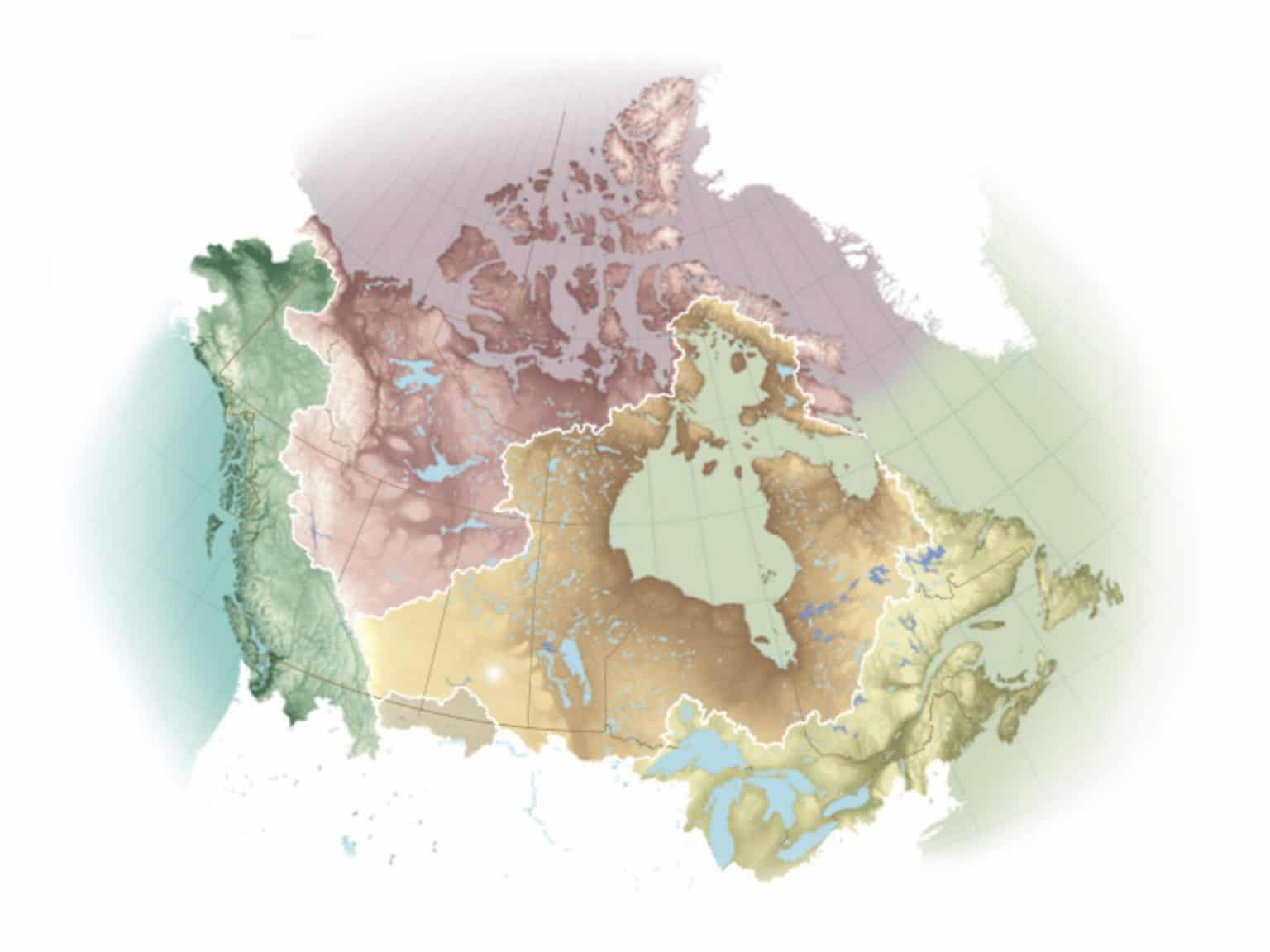Regardless of how far from the coast you may live, your direct relationship with your local waterways is a reflection of your relationship with the ocean. Our inland communities are connected to our coastal communities and individual daily actions can make a difference in ocean conservation, regardless of where you live.
A watershed is an area of land where all rainfall and surface water drains into a common place, such as creeks, streams, and rivers. All water in the same watershed leads to the same larger body of water, making watersheds vulnerable to pollution, runoff and land development. What affects the water quality in one stream will inevitably impact all other watersheds downstream — including when these bodies of water drain into the ocean.
In Canada, nearly every single watershed leads to an ocean. Water from west of the Rocky Mountains and through British Columbia flows towards the Pacific Ocean. In Northern Canada, the watersheds are connected to the Mackenzie River basin and out into the Arctic Ocean. The Great Lake watershed and eastern Canada streams and creeks drain into the Atlantic Ocean. Even the southern parts of the prairie provinces have watersheds that connect all the way out to the Gulf of Mexico!
Check out the Protect your Watershed interactive guide produced by Canadian Geographic to find out what watershed you live in.

Map Source: Canadian Geographic
Canada's Watersheds
Pacific Ocean
Arctic Ocean
Hudson Bay
Atlantic Ocean
Gulf of Mexico
Species Spotlight
Not only does the quality of water in our local watershed impact the quality of connected bodies of water, but how we treat our watershed impacts all species that live in both fresh and saltwater. There are a few species, including our beloved Pacific Salmon, that are anadromous, meaning that they spend time in both stream and ocean environments. All five Pacific salmon species will travel upstream to their home river spawning grounds and return back to sea to feed and grow.
Pacific salmon are integral to the ecosystem health of our coast. If we treat our salmon and their spawning streams poorly, the ocean ecosystem downstream can also be detrimentally impacted. Visit our salmon campaign page to learn more!
How Can I Protect my Local Watershed?
- At-home initiatives include reducing or eliminating toxic chemicals and fertilizers used for household and lawn maintenance to prevent bioaccumulation in watersheds.
- Any conservation of freshwater can help! Limit your showers and baths, and turn off water sources when they aren’t in use.
- Get outside and share your love of local waters with others.
- There are countless River Keeper and watershed conservation organizations — chances are, there is one near you. Do your research and get involved locally.
- Keep participating in ocean conservation campaigns. Even if you do not live on the coast, you are part of a watershed that connects to the ocean, and we need your help! Explore our website to learn more about our Herring, Salmon and Marine Protection campaigns.
Get to Know Your Watershed!
This Oceans Day, join our collaborative photo stream by sharing a photo of your local watershed. Share your photo on Instagram with the hashtag #StreamToSea and mention @pacificwild so it appears on our hashtag feed. Your watershed photo could include rivers, creeks, oceans, estuaries, mountains etc. The sky’s the limit!
You can also submit your photo through our online form (below) for a chance to be featured on our website and social media channels.


